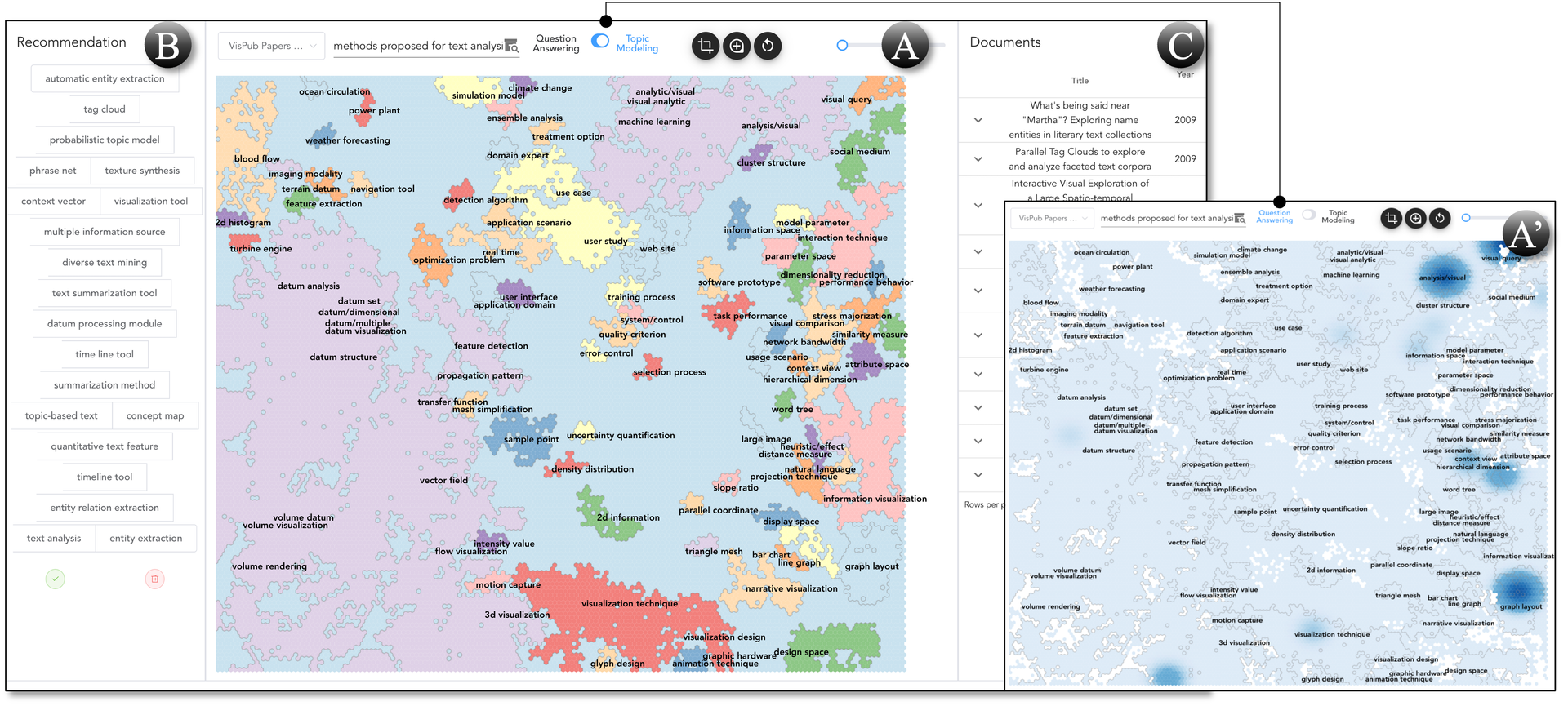PhraseMap: Attention-based Keyphrases Recommendation for Information Seeking
Yamei Tu, Rui Qiu, Yu-Shuen Wang, Po-Yin Yen, Han-Wei Shen
DOI: 10.1109/TVCG.2022.3225114
Room: 106
2023-10-24T23:57:00ZGMT-0600Change your timezone on the schedule page
2023-10-24T23:57:00Z

Fast forward
Full Video
Keywords
Machine learning;natural language processing;textual data;user-in-the-loop;visual analytics
Abstract
Many Information Retrieval (IR) approaches have been proposed to extract relevant information from a large corpus. Among these methods, phrase-based retrieval methods have been proven to capture more concrete and concise information than word-based and paragraph-based methods. However, due to the complex relationship among phrases and a lack of proper visual guidance, achieving user-driven interactive information-seeking and retrieval remains challenging. In this study, we present a visual analytic approach for users to seek information from an extensive collection of documents efficiently. The main component of our approach is a PhraseMap, where nodes and edges represent the extracted keyphrases and their relationships, respectively, from a large corpus. To build the PhraseMap, we extract keyphrases from each document and link the phrases according to word attention determined using modern language models, i.e., BERT. As can be imagined, the graph is complex due to the extensive volume of information and the massive amount of relationships. Therefore, we develop a navigation algorithm to facilitate information seeking. It includes (1) a question-answering (QA) model to identify phrases related to users’ queries and (2) updating relevant phrases based on users’ feedback. To better present the PhraseMap, we introduce a resource-controlled self-organizing map (RC-SOM) to evenly and regularly display phrases on grid cells while expecting phrases with similar semantics to stay close in the visualization. To evaluate our approach, we conducted case studies with three domain experts in diverse literature. The results and feedback demonstrate its effectiveness, usability, and intelligence.